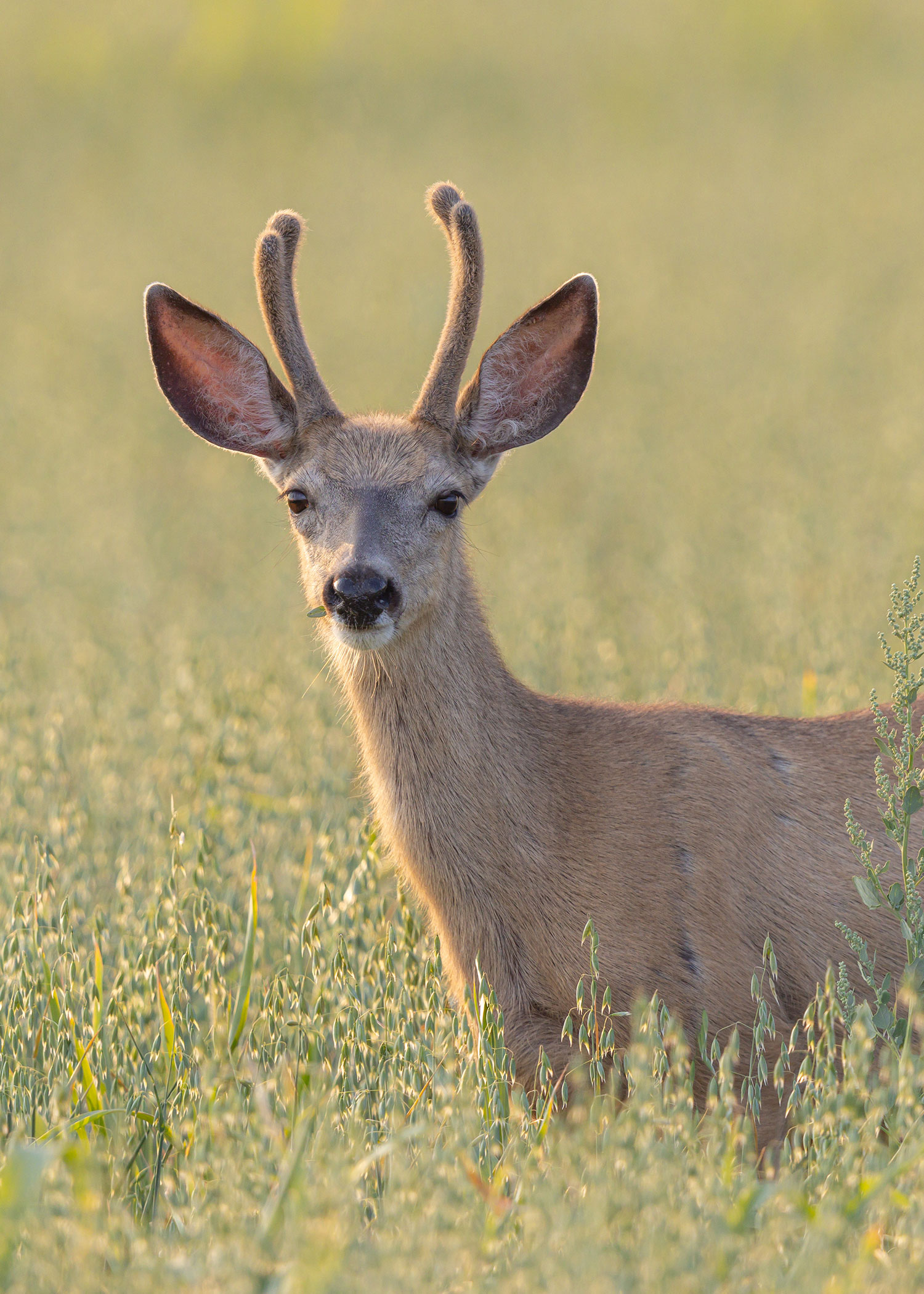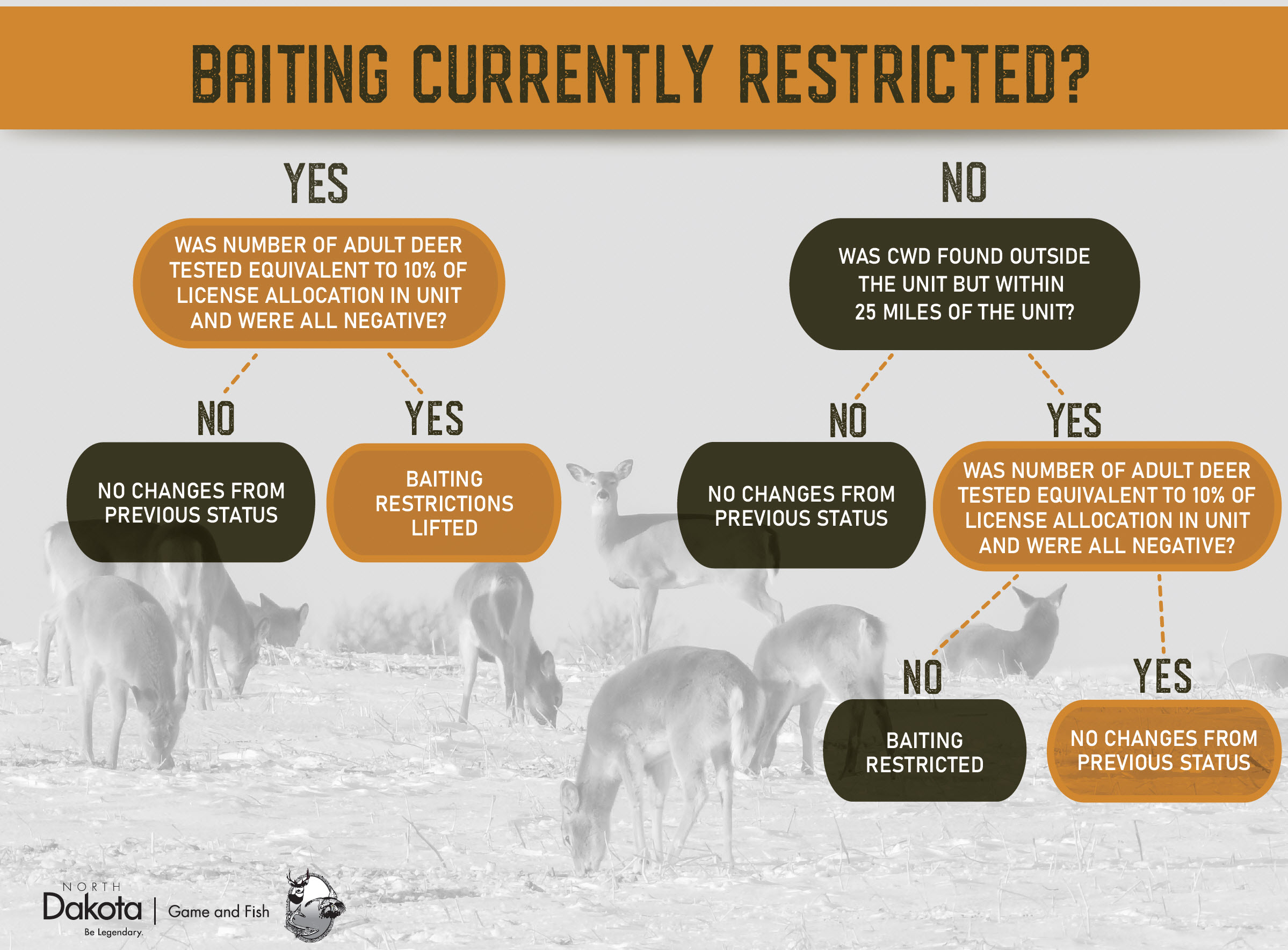Keeping CWD Rare in State
Ron Wilson

Notable adjustments have been made by wildlife managers in their effort to combat an always fatal disease to deer and other cervids that, at least at this point, remains rare in North Dakota.
With the state’s deer bow season opening in early September, Game and Fish Department officials announced in mid-August that big game hunters need to recognize the 2023 chronic wasting disease proclamation for baiting and transportation requirements for deer, elk and moose as a precaution against the spread of the disease.
“Unfortunately, the nature of the disease is that once it becomes established within a population and on a landscape, it’s really, really difficult to get rid of it,” said Dr. Charlie Bahnson, Game and Fish Department wildlife veterinarian. “CWD is caused by a prion, which is different from a virus or bacteria, and can’t really be deactivated … there’s not any kind of immune response. So, the first and foremost goal is to keep it out of a population. But once it’s in a population, the goal is to try to keep infection rates low.”
With that in mind, hunters need to be alerted to the following noteworthy items in the 2023 CWD proclamation:
- Whole carcasses of animals harvested in North Dakota can remain in the deer unit or may now be transported anywhere in the state. However, carcass waste must be disposed of via landfill or waste management provider. This does not apply to heads dropped at CWD collection sites or lymph nodes submitted for CWD surveillance. Taxidermists and game processors can also accept intact carcasses of animals harvested within North Dakota but assume responsibility for disposal.
- Hunters are prohibited from transporting into North Dakota the whole carcass or parts, except the lower-risk portions, of deer, elk, moose or other members of the cervid family harvested outside of North Dakota.
“We’ve followed the example of a number of other states, Montana, South Dakota included, by saying that animals that are harvested within the state can go anywhere within the state, but there is a disposal requirement,” Bahnson said. “So, once you’re done processing your animal, the high-risk carcass parts, the stuff left after taxidermy or processing must end up buried via landfill. And we say via landfill, meaning either you take it to a landfill, or you get it into your waste management provider flow, which ultimately gets that stuff buried in a landfill, off the landscape. And that ultimately will prevent the chance of an animal coming into contact with that material.”
Of course, hunters can, once they’ve finished processing their animal in the field, leave the remains at the harvest site.
Also of note:
- A new management strategy that allows baiting restrictions to be removed in a unit if the number of adult deer equivalent to at least 10% of the gun licenses allocated in the unit are tested for CWD within a year, and all the results are negative. If the sampling goal is not met or CWD is confirmed in the unit, the baiting restriction will remain.
- No new units have been added to the baiting restriction list for 2023-24. Due to the timing of finalizing the proclamation, a one-year pause was placed on adding new units. Units 2K1 and 3B2 are scheduled to be added to the restriction list in 2024 due to a positive CWD detection during the 2022 hunting season within 25 miles in an adjacent unit. They will not be added if the 10% goal is reached this year and all CWD test results are negative.
“One thing that we’ve been doing the last couple of years that we’re continuing to push is self-sampling. If you have a license, you can go on the Department’s website (gf.nd.gov) and request one of these self-sampling kits,” Bahnson said. “After getting the correct sample, the lymph nodes, hunters can put them in the mail, ship them to our lab, and we’ll get a test result for you. That is an option for anybody anywhere in the state. So, if you’re outside of one of our surveillance areas, you can request one of those kits.”
While Game and Fish officials concentrate on deer harvested during the gun season, the interest certainly doesn’t stop there. Bahnson said an underutilized sample source are those deer harvested by archers. To accommodate bowhunters who harvest an animal and want to drop off the head for testing, the Department has freezers stationed in specific locations, which can be found on the Department’s website.
“But also, the self-sampling option is going to be a pretty good route for bowhunters to take as well,” he said.

